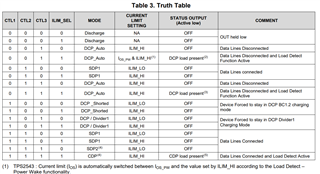Hi team,
For the TPS2543, how does the current limiting work?
I understand there are two resistors for setting the current limit. One for high threshold, and one for low threshold. The datasheet has a curve and equation for programming these.
What I’m not sure about is how it actually works because UFP determines the current draw. Does the TPS2543 droop the line as the UFP approaches the current limit, or is there some sort of negotiation that I’m not seeing in the BC 1.2 standard?
Thanks,
Jacob




